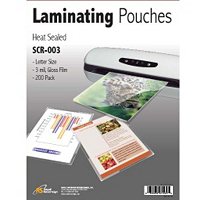I just spent the past 3 hours reading another teachers blog which promised to organize me. It wasn't helpful. I did get a new behavior chart idea that I may use for next year but overall this wasn't a good use of my time. I liked her concept: giving everyone assignments each day to complete projects (ultimate plan book etc...). Here is my quick organization guide:
1. Get supplies. You will need file folders - hanging and the ones that go in the hanging ones, pens - markers - sharpies or whatever you want to label file folders with. I don't recommend labels because you need to print them. The goal here is to quickly start your filing system and keep it organized. If you have to print a new label just to file a piece of paper, it won't be filed.
2. Gather the piles of papers you have laying around. You know you have them and you know how they get there. You run to the copy room to get stuff ready for the next 3 months. You spend your whole prep copying and then you realize you have to go get kids - like now! And so the stacks are born. Those papers get thrown on your desk and they stay there until you get frustrated, overwhelmed, or ambitious. I had a ton of stuff printed out that I ended up recylcing today because the papers ended up getting lost in my piles and my plans for them had changed.
3. Armed with your filing cabinet (mine is plastic from walmart), file folders and markers/pens/sharpies/labels, begin sorting through the stacks. Don't organize the papers first - that wastes time. Pick up 1 paper at a time. Decide whether or not you need to keep this. If you do, create a file for it. Be smart about your labels. Don't mark one folder "Reading" because you know that folder will be filled in about 2 minutes. I have a folder for visualizing, making predictions etc...Breaking the labels down by skill will make planning easier. I can also jot down lesson ideas on the folder itself. If I have an activity that has many papers with it, it gets it own folder. Continue doing this until your piles are gone. You may also need to create some more piles in this process such as a Need to do, need to grade, need to send home, need to take to the office, hang on the wall etc...try to keep it to a minimum. Congrats! Your filing system is well on it's way to being organized!
4. Now that the bulk of your piles are recycled or filed, you MUST tackle the remaining piles. Start with what can be taken care of in your room. Today I found a reading level chart that I wanted to hang by my desk so I hung that up. Next, I organized my "send home" papers into piles per child so I can quickly hand each student a pile when I see them. Papers I needed to take to the office I set by my door so the next time I went down to the office I could take it without making an extra trip.
Steps 2-4 need to be done in the same day. It's not impossible and you don't need to stay after school for hours. You don't have time you say? Here are some activities you can give kids to do while you sort piles: Practice state tests, center games (fcrr.org!), independent writing activity, independent reading (I do this every once in a while and am always surprised at how many kids can't read on their own.). It's not a waste of instructional time because these are all things that kids need. What is a waste of instructional time is being unorganized.
5. Relax! Enjoy the view of your pile-less desk.
*Warning: To keep piles away, you will need more organizational systems in place which we will work on but until then, you can continue to sort the piles that you accumulate.
I just found this analogy that I thought might help you so I'm sharing it here:
From Merlin Mann: “Lose the shells”:
The idea here is that you probably don’t have a place in your home or office where you store the shells from every peanut you ever ate. If you did, you’d definitely want to organize them by the year in which you ate them, perhaps keeping separate jars per-month or per-location where you ate the nut. You know. For posterity. But you don’t do that. It would be insane. Once you eat the peanut, the job of the shell is done. So lose it. Ditto dead email. Never organize what you can simply discard; and if you can’t discard it, throw it onto one big pile.























.JPG)







